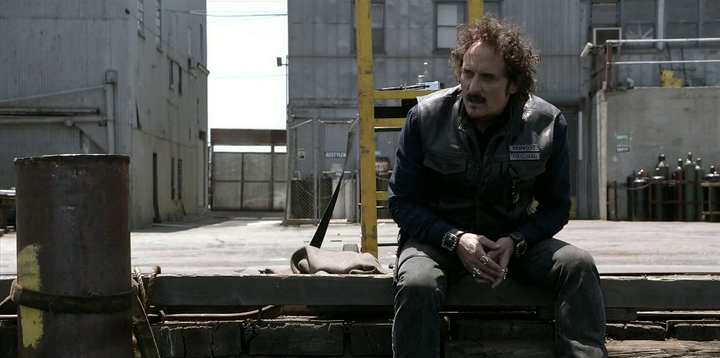The Sandman Overture #2
Written by Neil Gaiman
Art by J.H. Williams
Colors by Dave Stewart
Published by Vertigo Comics
Five months after the previous issue came out, Dream of the Endless returns to comics yet again and begins possibly his biggest journey yet courtesy of Neil Gaiman and J.H. Williams. Williams continues to show his mastery of panel layouts and figures as he creates the wondrous and diverse worlds called for in Gaiman’s script. And Gaiman continues to add to the world of Sandman by expanding upon Dream’s various aspects (hinted at in Sandman #18 “Dream of a Thousand Cats”) and his new antagonist. Dave Stewart brings a different color palette to each different world from the sharp features of Morpheus to the washed out figure and movements of his successor Daniel and the art-deco style of his antagonist. And to go with its gorgeous art, Sandman Overture #2 has quite an epic plot dealing with a cosmic war and the possible end of the universe. The story is filled with exposition, but Gaiman’s writing is charming and full of depth. He gives each aspect of Dream a slightly different personality and uses this concept to set up the rest of the miniseries.
Sandman Overture #2 is definitely a high concept comic. It deals with the biggest themes of all: reality and unreality, life and death, the creation of the universe and its end.It starts with Daniel, who is Morpheus’ successor as Dream, visiting a recurring Sandman character Mad Hettie before continuing the previous issue’s story as Dream discusses the death of one his aspects with his other aspects. (This comic is so weird to describe.) Gaiman captures Morpheus’ arrogant attitude as he tries to silence the other aspects and initially refuses to help fight against this mysterious enemy. He uses the aspects of Dream to explore his different attributes and allow for a lot of characterization and rare moments of self-realization from him. Williams’ art enhances each scene and adds layers to Gaiman’s dialogue. He also shows the subtle differences between Daniel and Morpheus and provides a horrific glimpse of the threat that is only talked about vaguely.
J.H. Williams plays the role of both cinematographer and set designer as he brings Gaiman’s vision to life while also telling a  sequential story. He makes scenes that could be rote talking heads into mini-masterpieces. He jumbles the different aspects of Dream together in a two page splash page with cluttered square panels to show how fragmented and conflicted Dream is. His design work for the various aspects are very ingenious, especially with the First Dream, who looks like a mix between a single celled organism and one of H.P. Lovecraft’s Old Ones. Like Gaiman, who mined from the great stories of mythology and literature for Sandman, Williams references different art movements, like Surrealism, Dadaism, and Art Deco plus comics artists like Mike Mignola and Sandman cover artist Dave McKean. He even draws a diagram of Mad Hettie’s dream (or real) asylum where Daniel meets her. Dave Stewart’s colors bring Williams’ art to life and give Dream and his aspects’ even more development. He augments little bits of the story like Daniel’s white wisps when he moves throughout the world of the Dreaming. Sandman Overture #2 has a non-linear story with a powerful villain and some interesting concepts, and Williams and Stewart bring these things to life.
sequential story. He makes scenes that could be rote talking heads into mini-masterpieces. He jumbles the different aspects of Dream together in a two page splash page with cluttered square panels to show how fragmented and conflicted Dream is. His design work for the various aspects are very ingenious, especially with the First Dream, who looks like a mix between a single celled organism and one of H.P. Lovecraft’s Old Ones. Like Gaiman, who mined from the great stories of mythology and literature for Sandman, Williams references different art movements, like Surrealism, Dadaism, and Art Deco plus comics artists like Mike Mignola and Sandman cover artist Dave McKean. He even draws a diagram of Mad Hettie’s dream (or real) asylum where Daniel meets her. Dave Stewart’s colors bring Williams’ art to life and give Dream and his aspects’ even more development. He augments little bits of the story like Daniel’s white wisps when he moves throughout the world of the Dreaming. Sandman Overture #2 has a non-linear story with a powerful villain and some interesting concepts, and Williams and Stewart bring these things to life.
Sandman Overture #2 has a lot of exposition and set-up for Morpheus’ war against his possible universe conquering foe, but Gaiman’s script is sharp, philosophical, and filled with little flashes of humor. (Morpheus’ first exchange with the Council of the First Circle made laugh out loud.) Sandman Overture is definitely a big, cosmic story and a perfect showcase for JH Williams’ experiments with panel structure and layouts. It also begins bridges the gap between the haughty, distant Morpheus and the more human Morpheus of Sandman, who is still proud and distant. It is part schizophrenic inner monologue, part ctime and space spanning adventure, and all beautiful storytelling from Neil Gaiman and J.H. Williams.




